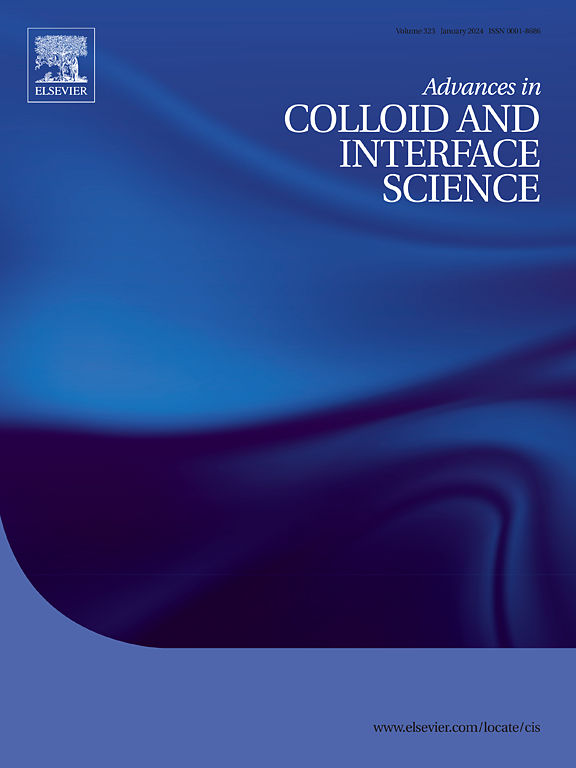金属有机框架(MOF)和共价有机框架(COF)的融合:在催化、传感和生物医学前沿跨越边界的协同飞跃
IF 19.3
1区 化学
Q1 CHEMISTRY, PHYSICAL
引用次数: 0
摘要
金属有机框架(mof)和共价有机框架(COFs)已经成为一种变革性材料,一直吸引着各个学科的科学家,以其独特的属性而闻名,如大比表面积、结构可调性、高结晶度和精确定义的可访问多孔结构。合成策略的最新进展通过整合这些框架,促进了MOF/COF混合结构的工程,产生了一类具有协同特性的优越多孔材料。这篇综述全面概述了各种MOF-COF异质结构和混合变体的最新设计及其创新的制造方法。它系统地对不同的MOF/COF混合架构进行了分类,从而将所有已建立的变体统一在一个统一的概念框架内。与以往的研究不同,本文结合了各种制备方法,并对其结构构型、关键属性、合成可行性、固有优势和局限性以及应用前景进行了比较评估。解决了文献中的一个关键差距,它还全面检查了所采用的表征技术,包括结构、形态、热和元素分析,以阐明对这个令人兴奋的多孔家族的详细了解。人们已经付出了相当大的努力来揭示使mof和COFs互补属性协同整合的界面化学。此外,本研究系统地强调了催化的开创性进展,如分子催化、光催化和能量转移光催化,以及更广泛的领域,包括化学传感、气体吸附和分离、生物传感、摩擦学和生物医学技术。最后,概述了MOF/COF复合材料目前面临的挑战和未来的发展方向,强调需要通过创新的连接、先进的异质结构和定制的结构来提高化学稳定性、界面电子耦合和结构通用性。机器学习和数据驱动方法的整合将加速为催化、储能、传感和分离量身定制的混合动力的合理设计,同时利用协同作用和新兴的合成范例将为广泛的高影响力跨学科应用解锁多功能平台。本文章由计算机程序翻译,如有差异,请以英文原文为准。

The fusion of metal-organic framework (MOF) and covalent organic framework (COF): A synergistic leap toward bridging boundaries in catalytic, sensing, and biomedical frontiers
Metal-organic frameworks (MOFs) and covalent organic frameworks (COFs) have emerged as transformative materials that consistently captivated scientists across various disciplines, renowned for their exceptional attributes such as large specific surface area, structural tunability, high crystallinity, and precisely-defined accessible porous architectures. Recent advancements in synthetic strategies have facilitated the engineering of MOF/COF hybrid constructs by integrating these frameworks, yielding a superior class of porous materials with synergistic characteristics. This review presents a comprehensive overview of state-of-the-art design for diverse MOF-COF heterostructures and hybrid variants alongside their innovative fabrication methodologies. It systematically classifies the diverse MOF/COF hybrid architectures, thereby unifying all established variants within a unified conceptual framework. Distinct from prior studies, this article combines the various fabrication approaches with a comparative assessment of their structural configurations, key attributes, synthetic feasibility, inherent advantages and limitations, and application prospects. Addressing a critical gap in the literature, it also comprehensively examines the characterization techniques employed, encompassing structural, morphological, thermal, and elemental analyses, to elucidate a detailed understanding of this exciting porous family. Considerable efforts have been dedicated to unravelling the interfacial chemistries that enable the synergistic integration of the complementary attributes of MOFs and COFs. Moreover, this study systematically highlights the pioneering advancements spanning catalysis—such as molecular catalysis, photocatalysis, and energy-transfer photocatalysis—as well as broader areas, including chemical sensing, gas adsorption and separation, biosensing, tribology, and biomedical technologies. Finally, the existing challenges and future directions for MOF/COF composites are sketched, emphasizing the need to enhance chemical stability, interfacial electronic coupling, and structural versatility through innovative linkages, advanced heterostructures, and tailored architectures. The integration of machine learning and data-driven approaches will expediate the rational design of hybrids tailored for catalysis, energy storage, sensing, and separation, while leveraging synergistic interactions and emerging synthetic paradigms will unlock multifunctional platforms for a broad spectrum of high-impact cross-disciplinary applications.
求助全文
通过发布文献求助,成功后即可免费获取论文全文。
去求助
来源期刊
CiteScore
28.50
自引率
2.60%
发文量
175
审稿时长
31 days
期刊介绍:
"Advances in Colloid and Interface Science" is an international journal that focuses on experimental and theoretical developments in interfacial and colloidal phenomena. The journal covers a wide range of disciplines including biology, chemistry, physics, and technology.
The journal accepts review articles on any topic within the scope of colloid and interface science. These articles should provide an in-depth analysis of the subject matter, offering a critical review of the current state of the field. The author's informed opinion on the topic should also be included. The manuscript should compare and contrast ideas found in the reviewed literature and address the limitations of these ideas.
Typically, the articles published in this journal are written by recognized experts in the field.

 求助内容:
求助内容: 应助结果提醒方式:
应助结果提醒方式:


